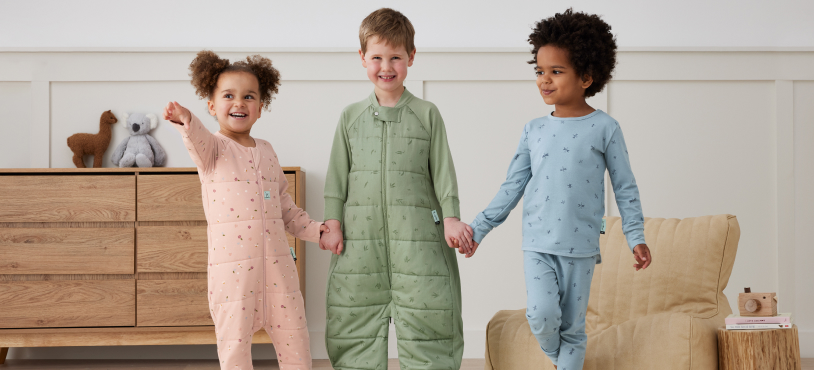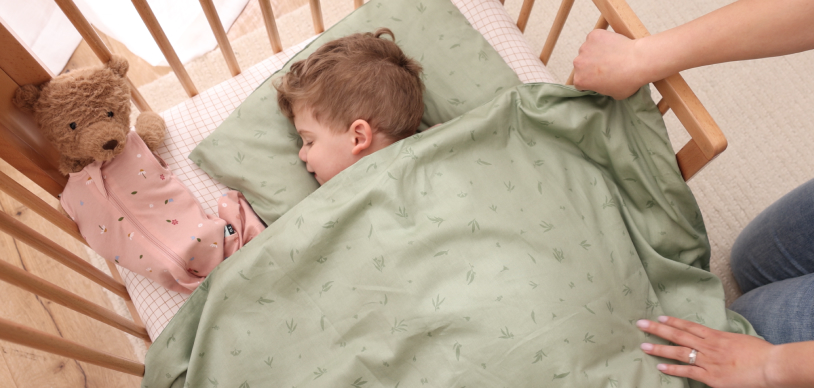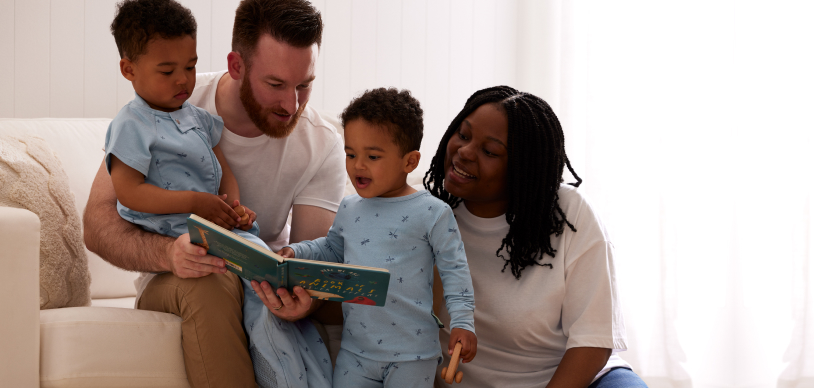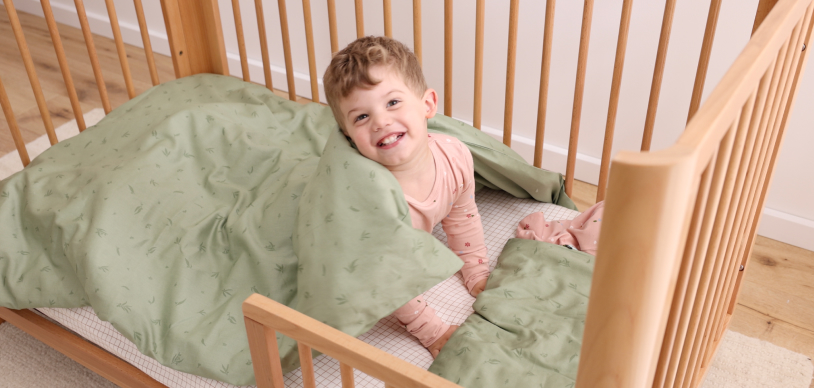
Scientific evidence shows that parents play an important role in their baby and toddlers sleep habits and behaviours. This is good news because it means that parents can help build positive sleep habits for their children.
We often look at baby sleep, but what about pre-schoolers?
There are many hurdles that pre-schoolers aged around 3-4 years face when it comes to sleep. What are the sleep hurdles for a preschooler?
Sometimes it might feel like your little one is allergic to sleep. There are several sleep problems that can occur around this age.
Some problems include:
- Early morning waking
- Resisting bedtime
- Refusing to sleep in their own bed
- Co-sleeping (when you don't want it!)
- Waking during the night
- Night terrors and nightmares
- Kicking off blankets and getting cold
Causes of preschooler sleep issues:
There are many causes that are unique to your little one. Here are a few common ones:
- Most children are now adapting to an early learning or kindergarten facility. This means they are spending a lot less time with their parents than before and might be simply missing you - which is why they want extra time awake at night!
- Make sure to give them plenty of attention and affection during the day (especially in the lead up to bedtime). At this age, they are also learning to play with other children. Maybe they have a secret anti-sleep club where they see who can wake their parents up the most.
- More likely they are just adjusting to socialising during the day and may be thinking about all the new people in their life that are disturbing pre-set routines.

Sleep Science Guru's top tips for helping preschooler's sleep
1. Introduce a consistent bedtime routine. This is because this routine helps clue your little one into what is going to happen next. Your pre-schooler is smart enough to understand a routine, and this will help them mentally prepare for sleep. Dress them in an ergoPouch TOG rated Sleep Suit Bag with legs, so they have the freedom to move their legs in bed.
Tips for a good routine include:
- A wind-down period (preferably with no technology) of 30 minutes - an hour to help calm them down from the day
- Include a bath and book or similar story-time' before bed to get them relaxed
- Turn the lights down and keep the house as quiet as possible when taking them to bed
- Give your child a comforter (a soft and special toy that helps them feel secure). Comforters can be really good for anxious children
- Tuck your child snugly into bed, so they feel warm and secure
- Always dress them in their ergoPouch it will be a friendly reminder sleep time is imminent. When your little one wears their ergoPouch Sleep Suit Bag or Sleep Onesie, there is no need for extra blankets. Meaning your little one won't wake in the night complaining of being cold.
2. Introduce a night light. This is especially helpful for little ones with a fear of the dark. Try use one with a red globe as this promotes the sleepy hormone melatonin.
3. Introduce a comforter. Giving them a comforter can really help alleviate some of their anxiety and make them feel secure.
4. Remain calm, clear and consistent. There is nothing more confusing than not knowing what exciting thing might happen the next time I run into Mum and Dads room! For a child, how you react is the most exciting thing in the world and definitely more exciting than staying in bed.
Tip: Try implementing the sleep science silent return. This involves calmly asking your child to return to bed. Keep your voice neutral and the same each time. If you have to walk them there, take them there and remind them how you are just around the corner. Do this again and again until your little one learns to stay in their own bed. It does take little ones 3-14 days to form a habit!
Please remember that so many of us struggle with sleep, including a lot of adults!
If you feel like your situation needs some extra help, please feel free to contact the Sleep Science Guru team.
They offer free 15-minute phone consultations to help get you started! Click here to get in touch with Sleep Science Guru.

Transitioning to a big bed
For safety reasons, when a young child is observed attempting to climb out of a cot and looking like they might succeed, it is time to move them out of the cot. This usually occurs when your toddler is between 2 and 3½ years of age but could be as early as 18 months.
When your little human is ready for their first big bed, they may need some time to adjust to sleeping underneath sheets. Let us introduce a Sleep Onesie to your sleepwear stash. This relaxed-fitting onesie is suitable for adventurous 3-year-olds who prefer sleepwear with the freedom to move. A perfect piece if your little one is toilet training or ready to graduate from their cot into a bed (and is likely to kick their sheets off).
Whilst you don't need to use blankets when wearing the Sleep Onesie, you may consider using a sheet, while they learn to pull the sheet up. Once they've gotten used to pulling sheets up, they can transition to blankets, and pyjama's as needed for the temperature in their room (no sooner than 3 years old).
Introducing a flat, small pillow into the bed (no sooner than 2 years old according to Red Nose guidelines) can help your child to learn to keep their body in one place in a big bed.
Safety considerations
Now that your mini is in a big bed, they have access to other areas of the house during sleep times. Consider how safe the rest of their room and house is, in the event, they wander out. Red Nose have some great guidelines to review to help you with this;
- Keep dangling cords, strings and mobiles out of reach as they could get caught around a child's neck
- Keep heaters, electrical appliances and access to power points well away to avoid the risk of overheating, burns and electrocution
- Ensure stairs and windows are not accessible
- Pay special attention to potential hazards that may result in falls, drowning, strangulation, entrapment or poisoning
- When removing the sides from a cot or transitioning to a toddler bed or big bed, you may choose to start with a mattress on the floor, or consider a safety rail to prevent falls out of bed in the night. Safety Rails must have no spaces between bars or panels bigger than 95mm to prevent a young child to becoming trapped.

Pyjamas
Introducing our new, fabulous, must-have Pyjamas for your toddler or preschooler
Designed to be worn on their own for the kids who have transitioned to a big bed, or underneath any of our Pouches. And because we always design with your mini in mind, we think you'll love these particularly useful features:
- 1.0 TOG rated, unbrushed terry fleece means nice and thick jammies for winter weather and extra warmth if your babe is still getting used to keeping their blankets up
- Extra length at the back to prevent ride-up and cold backs during the night
- Stretchy fabric and cuffs to make it easier for independent kids to dress and undress (helpful for overnight toileting!)
- Breathable organic cotton and bamboo to prevent sweaty feels overnight
- Slim fit for comfort, if wearing under a Sleep Suit Bag or Sleep Onesie
With love,
eP X